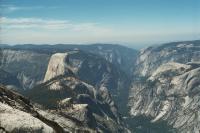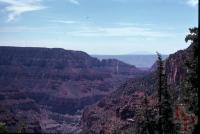
The VisionBib.Com site is a collection of web sites that provide a variety of resources related, mostly, to the area of Computer Vision.
May 2018 was difficult for the users of this site. About the time I left for vacation, there was a disruption by the hosting company, then things worked for a while, then they broke completely. The former provider (site5.com) apparently decided to point to the previous server (they had transferred the site in April to new servers) rather than the current server. According to online reviews, this became a common problem for many other Site5 users. When I returned from vacation, it was faster to just move the site to another provider than to get through to some intelligent support person. Indeed, 2 days after the transfer (4 days after my last attempt at contact) Site5 support finally responded by saying they could not do anything until I changed my DNS pointers back to the wrong ones on their site. Site5 customer service continues to exhibit total incompetence with occasional requests that I make changes. As long as they continue to bother me, I will continue to complain about their lack of service.
with indexes for Author, Journal/Conference, Keyword, Words in title, and Authors by year was last modified on Saturday, January 17, 2026, 4:13 am. This bibliography first appeared on the internet in early 1994 (before Google, before Internet Explorer (Edge), before Facebook, before Safari) and provides information on 255,000+ scientific papers in the field of computer vision, image processing, video processing, character recognition, remote sensing, and other related topics. Many entries have links to online versions (230,000+), but most journals require you to purchase the full text. (The statistics page, with totals of authors, titles, and other references charts the explosive growth in publications in the field from the occasional paper in the 1950s to the thousands per year today.) VisionBib is the official complete site for the bibliography. The original USC Iris Vision Bibliography now points to the new site. Several subsets, described below, have been extracted into separate sub-sites.
Recent bibliography updates (primarily the current
month) are provided through a set of ![]() RSS feeds for new papers. These are arranged
by the same sections used on the contents page.
RSS feeds for new papers. These are arranged
by the same sections used on the contents page.
The bibliography has precomputed index links for Author, Journal, or Word in the Title (KWIC: Key Word In Context). These are on the main page or also grouped in the Jump directly to the index page. The browsing options from the home page often give better information. Co-authors are available from the Author index.
The historical Rosenfeld Bibliography data is also available, but it is incomplete (i.e. it ends in 1998) and is produced by an automatic translation so there are lots of errors.
General computer vision link are described in more detail in the Extended Computer Vision Resources Listing.
Research groups (primarily universities) are listed somewhat geographically. Some companies are included in this list, others show up under the vendors list.
lists current conferences, workshops, etc. with information on paper submissions, locations, websites, and an archive of this information for past meetings. A complete listing of Conference deadlines for about the next 3 months is also available. For listing by year (with some sort options) see the One Year Conference List.
Support the Bibliography: Shop Amazon through this link:
Site search options -- either the conferences or the bibliography:
 |
 |
Stereo, the use of 2 or more images to provide three-dimensional information or displays, has a long history. Stereo for sound (music) came much later. I have collected some stereo pairs, which can be viewed on the screen. Most of these are scenery, but there are some with buildings.

Why Yosemite? It is a place I enjoy. I have included some pictures and pointers to the usual places, and some not so usual. Enjoy. And the picture at the top, it is correct. This is not the usual view of Half Dome from the Valley or Glacier Point, it is the view from Clouds Rest so the half part of the dome is on the "wrong" side.

Sequoia and Kings Canyon are not quite Yosemite, but together they have more to offer than just the trees (remember, they are sequoias, not redwoods). I have included some pictures and pointers to the usual places. Enjoy.

A lot of places claim to be the Grand Canyon of something-or-the-other, but there is only one Grand Canyon. Grand Canyon is timeless, yet provides a record of time; changeless, yet is different by the hour. Other canyons may be longer, deeper, wider, steeper, but none have all the qualities that make this canyon Grand.
A really interesting site about Architecture in Los Angeles, from someone who spends vacations here. (The LA Times story of April 11, 2007 says it best.)
Are the billboards in Los Angeles getting you down? In 2008 Christine Pelisek wrote an article in LA Weekly: Billboards Gone Wild: 4,000 Illegal Billboards Choke L.A.'s Neighborhoods which included 4 listings of billboards for 3 of the major companies in LA. At one time I had them available for browsing at my LA Billboard Information Site But no more.


A lot of this has been derived from my work with the Computer vision group at USC.
This file was last modified: